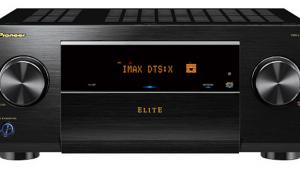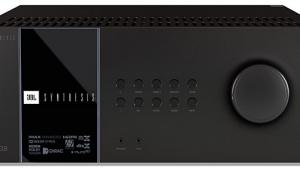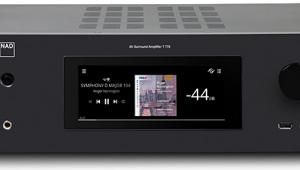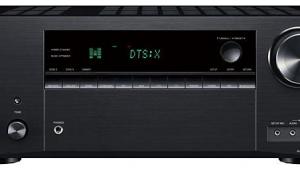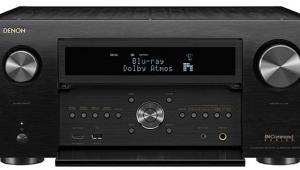Cambridge Audio Azur 751R A/V Receiver
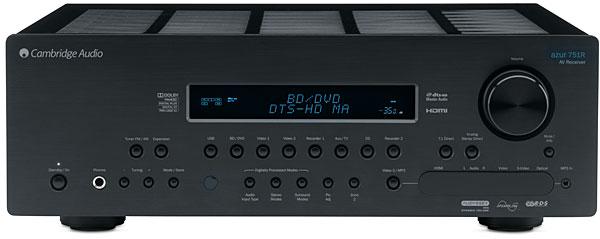
There are things I just won’t do. I won’t let a door slam in the face of a parent pushing a stroller. I won’t desecrate discs from the public library with fingerprints and scratches. I won’t have a second martini (learned that one the hard way). I won’t use the word anyhoo. That’s not even a word. Look it up. And I won’t let two-channel loyalists glory-hog the high ground when they claim the audio/video receiver is always an underperformer, never more than the sum of its attention-getting features, and somehow irredeemably anti-high-end.
In receivers, as in many other product categories, some products attain true high-end status and others don’t. Sometimes the high-end distinction fades up slowly as you move up a manufacturer’s line: Amps get beefier, bass gets stronger, distortion lessens. And sometimes the brand itself tells you that every product design, regardless of price, starts with high-end aspirations. Such a brand is inclined to budget more for sound quality and less for features. For a company like Cambridge Audio, the prime directive is to provide the best sound for your dollar.
That doesn’t mean you’d use even a top-of-the-line receiver like the Cambridge Azur 751R to run giant speakers with ridiculously low sensitivity or impedance ratings. There are some speaker-driving tasks best left to separates. But a high-performing receiver does expand the potential range of speaker mates. And it may get more bass than you’d expect out of your reasonably efficient speakers. That’s what happened to me when my demos for this product turned into a lost weekend of boxed-set vinyl piano listening—but I’m getting ahead of the story.
The Birth of Cool
For a top-of-the-line receiver, the Azur 751R does not bulk large. One of the reasons it does not need a large chassis is Cambridge Audio’s X-Tract, a combination of radiated and fan cooling that keeps the large power supply (with its massive toroidal transformer) and Class AB amplifiers running cool inside a relatively short and tightly packed space. People who despise receivers should take a look at this resonance-defeating all-metal chassis, including a faceplate nearly a half-inch thick.
The front panel is quite functional, too: In addition to the usual volume, input-select, and tuning controls, there are buttons that shift among the surround, stereo, and analog direct modes, the 7.1-channel input, and the second zone. If you lose the remote, you needn’t lose your mind. The remote, while simple and narrow, has a nice heft. Layout is unorthodox, with input-select buttons on bottom and listening-mode functions on top. There’s no backlighting, but the white-on-black legends printed onto the buttons are readable. The button labeled Surround Modes actually fits in both words without abbreviation. The graphic user interface is simple and white-on-blue monochrome. It is less attractive—though in some ways easier to use—than the full-color GUIs in most mainstream-brand receivers.
The 751R is rated at 120 watts into 8 ohms with all seven channels driven, 170 into 8 ohms with two channels driven, and 200 watts into 6 ohms with two channels driven. Past experience suggests that our measurements will not differ dramatically. Some AVR makers lie like mad on their spec sheets; Cambridge is not one of them.
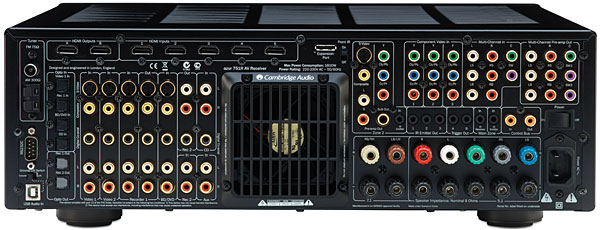
This receiver’s back panel is smaller than that of a typical topof-the-line receiver. However, the real estate is well used. It’s hard to imagine anyone needing more than six HDMI inputs and two outputs (the latter are both ARC compliant). There are also three high-def-capable component video ins and one out, one for second-zone use. (A separate Zone 2 remote is supplied, and a “Follow Main” function allows digital sources to be routed to the second zone.) Cambridge is one of the few receiver makers to support S-video for legacy analog source components as well as the more customary composite video. A set of 7.1-channel analog inputs is provided to patch in an old universal disc player; there’s also a set of 7.1 outputs (with the option to run twin subs) to feed a separate amp.
One extremely noteworthy addition to the connectivity suite is the back-panel USB Type B jack. It allows you to connect a Windows or Mac computer and play audio files with resolution of up to 24 bits and 96 kilohertz through an onboard digital-to-analog converter (up to 192 kHz with a downloadable driver). This is only the second receiver I’ve reviewed—after the Pioneer Elite SC-68—to include a computer-friendly DAC. And it uses asynchronous technology similar to that used in high-end DACs selling for hundreds or even thousands of dollars as separate components. The advantage of an asynchronous DAC is it wrestles the clocking function away from the computer, stabilizing the bitstream to eliminate potentially sound-polluting jitter. Additionally, all digital content coming into the remaining digital inputs is upsampled to 24 bits/192 kHz by Anagram’s ATF (Adaptive Time Filtration) anti-jitter technology, said to be an exclusive here among AVRs.
Given Cambridge’s prioritization of sound over features, perhaps we shouldn’t be too disappointed that the USB input is not iOS capable. The receiver does not offer an Ethernet connection or Wi-Fi accessory and therefore has no network audio features. Also absent are onboard AirPlay or Bluetooth wireless capability. However, a front-panel analog minijack can patch in any kind of phone, tablet, or music player. You might also explore non-Cambridge connectivity solutions such as an Apple AirPort Express, a Bluetooth dongle, or an iOS dock with analog outputs.
Auto setup and room correction are significant features of any modern audio/video receiver, regardless of price or aspirations. Cambridge has licensed Audyssey 2EQ. There is no such thing as bad Audyssey room correction—although a listener paying $2,999 for a receiver should note that of the four Audyssey schemes, 2EQ has the lowest filter resolution. The others, in ascending order of quality, are MultEQ, MultEQ XT, and MultEQ XT32. There is no bass correction in 2EQ, a notable omission given the near-universality of uneven bass response in real-life rooms. One possible workaround would be to use a sub that supports bass-related room correction, such as my Paradigm Seismic 110.
Audyssey Dynamic EQ and Dynamic Volume are provided, so this receiver is up to the minute in terms of low-volume listening modes. The practical benefit is that you can enjoy action movies and other highly dynamic content at any time of day without either disturbing anyone or losing track of dialogue and surround levels.
- Log in or register to post comments


